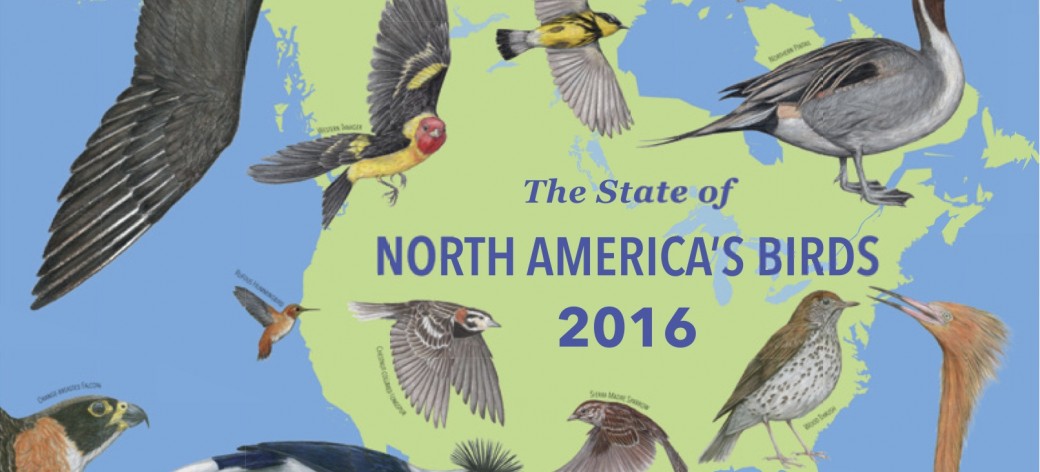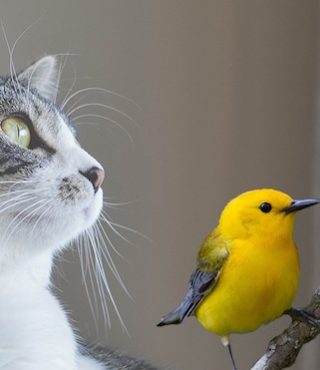The State of North American Birds (2016)

On May 18, the official Report on The State of North America’s Birds was released by Catherine McKenna, the federal Environment Minister at the Museum of Nature in Ottawa. A simultaneous event to launch the Report was held at the Canadian Embassy in Washington, DC. This initiative was developed by the North American Bird Conservation Initiative (NABCI), and is the result of a unique collaborative effort of scientists, governments, non-government organizations (including Nature Canada), and other partners and citizen scientists from Canada, the US and Mexico..
The Report presents a “balanced” picture that there are some good things to counterbalance the many bad things happening to bird populations, but the fact that jumps out is that only 14% of our collective bird species are doing well. Contrast that with the 37% that are of high conservation concern (require immediate attention or risk extinction) and the 49% that are of moderate conservation concern (including species such as Common Nighthawk, Barn Swallow and Eastern Meadowlark that are in long-term decline and considered species at risk in Canada), and it is hard not to feel a bit gloomy.
The Report assesses the conservation status of all 1,154 bird species that occur in Canada, the continental United States and Mexico, presenting a report card on how species are doing across the nine major North American ecosystems. It is also an excellent demonstration of the power of birds, and the growing power of citizen science. Tens of thousands of Canadians, Americans, and Mexicans contributed bird observation data to help produce an unprecedented continent-wide assessment of North America’s birds
Ocean birds present the highest conservation concern, with 57 percent of the 54 species facing declines driven by pollution, unsustainable fishing, energy extraction, invasive species (particularly cats and rats), and climate change. Tropical forest species are also in big trouble with 56% of the 478 species requiring urgent attention.
Almost 40 percent of 164 coastal species are on the Watch List due to pressures from sea-level rise, coastal development, disturbance from human recreational activities, and the threat of oil spills.
As well, a third of North America’s grassland breeding birds are of high concern due to steep population declines and habitat threats such as conversion to cropland and urban development.
The release coincides with the Centennial year of the Migratory Bird Convention, an agreement between the United States and Canada that promised collaborative conservation to protect the migratory birds of North America. In Canada, the Migratory Bird Convention resulted in the Migratory Bird Convention Act (1917, revised in 1994), the law that protects birds in Canada harm including capture or injury of adult birds or damage or destruction of their nests, eggs or young. This law stopped market hunting that drove the Passenger Pigeon to extinction, resulted in regulated harvest of only certain species (e.g. waterfowl), and recognizes the good that birds do for the environment in terms of ecological services.
Among the “good” things mentioned in the Report is the work that has been done to protect and recover waterfowl populations. This underlines the obvious : when we invest heavily in conservation as a society, as we did with regard to waterfowl over 50 years ago, the birds respond positively.
Despite the very large estimates of bird mortality due to free roaming cats (estimates are between 100 and 350 million in Canada and over 1 billion the USA, with no estimate for Mexico), cats are only mentioned once in the Report in the context of eradication programs on islands to prevent predation of vulnerable seabirds. However, many of the species cited as of concern are vulnerable to predation by cats.
The Report has a website, in which one can easily navigate to the Change section and find our own website on the Citizens page. There are also links to other components of Nature Canada’s Save Bird Lives webpages.
The Minister, in her statement at the release, called The State of North America’s Birds a “call to action” due to the dire situation faced by most of our bird species. We must remember that our ecosystems rely on the services that birds provide, such as predation of foliage-damaging insects that keeps our forests healthy and efficient in capturing carbon dioxide. Like the canary in the coal mine, the silencing of large numbers of our birds due to a multiplicity of human-related factors, including cat predation, is a warning to us to act now in support of our bird populations. We need to take action to eliminate all unnecessary causes of bird mortality, including pet and feral cats, and give our birds a chance to survive otherwise we will lose species.
— Ted Cheskey, Senior Conservation Manager, Nature Canada











